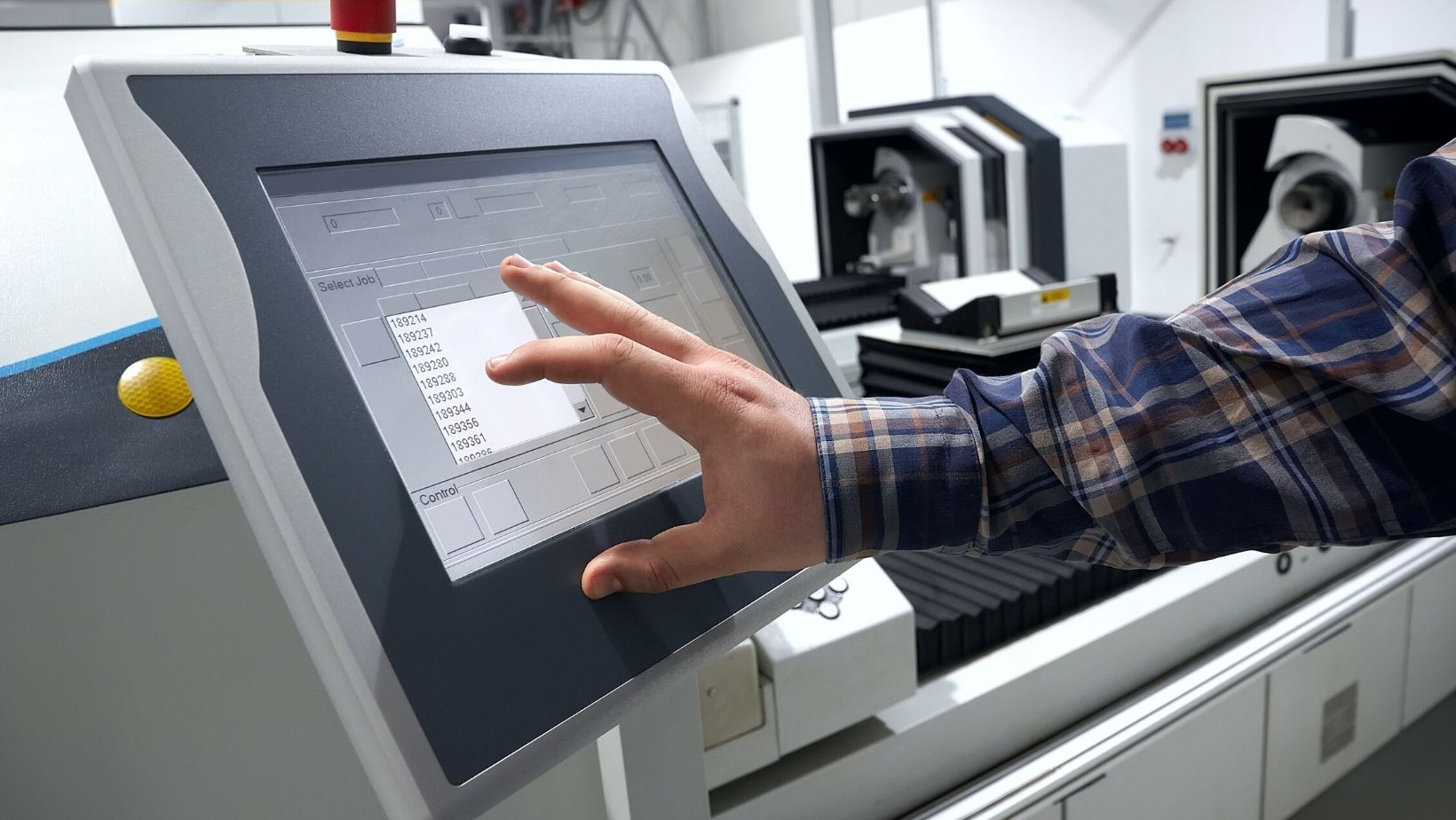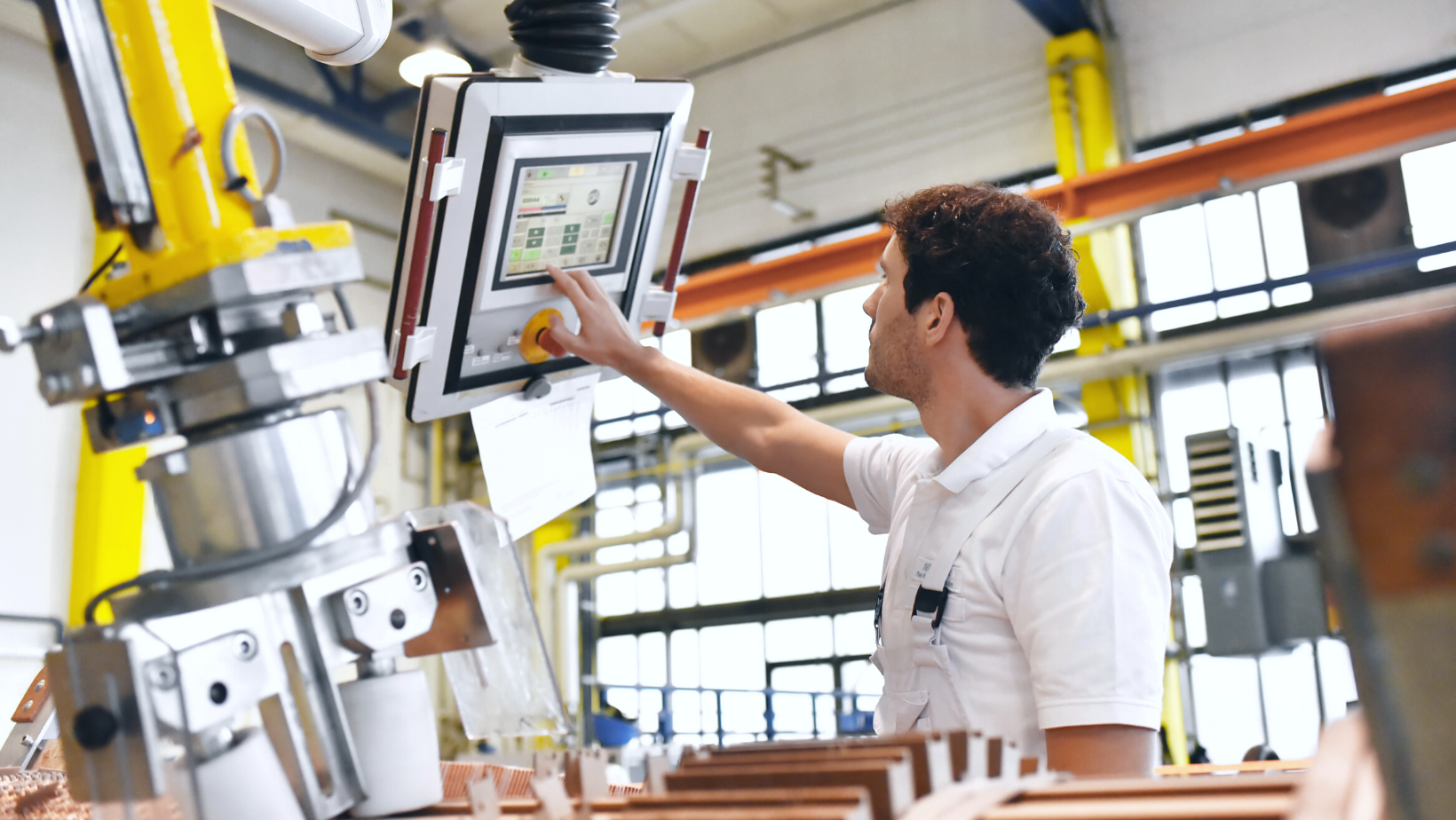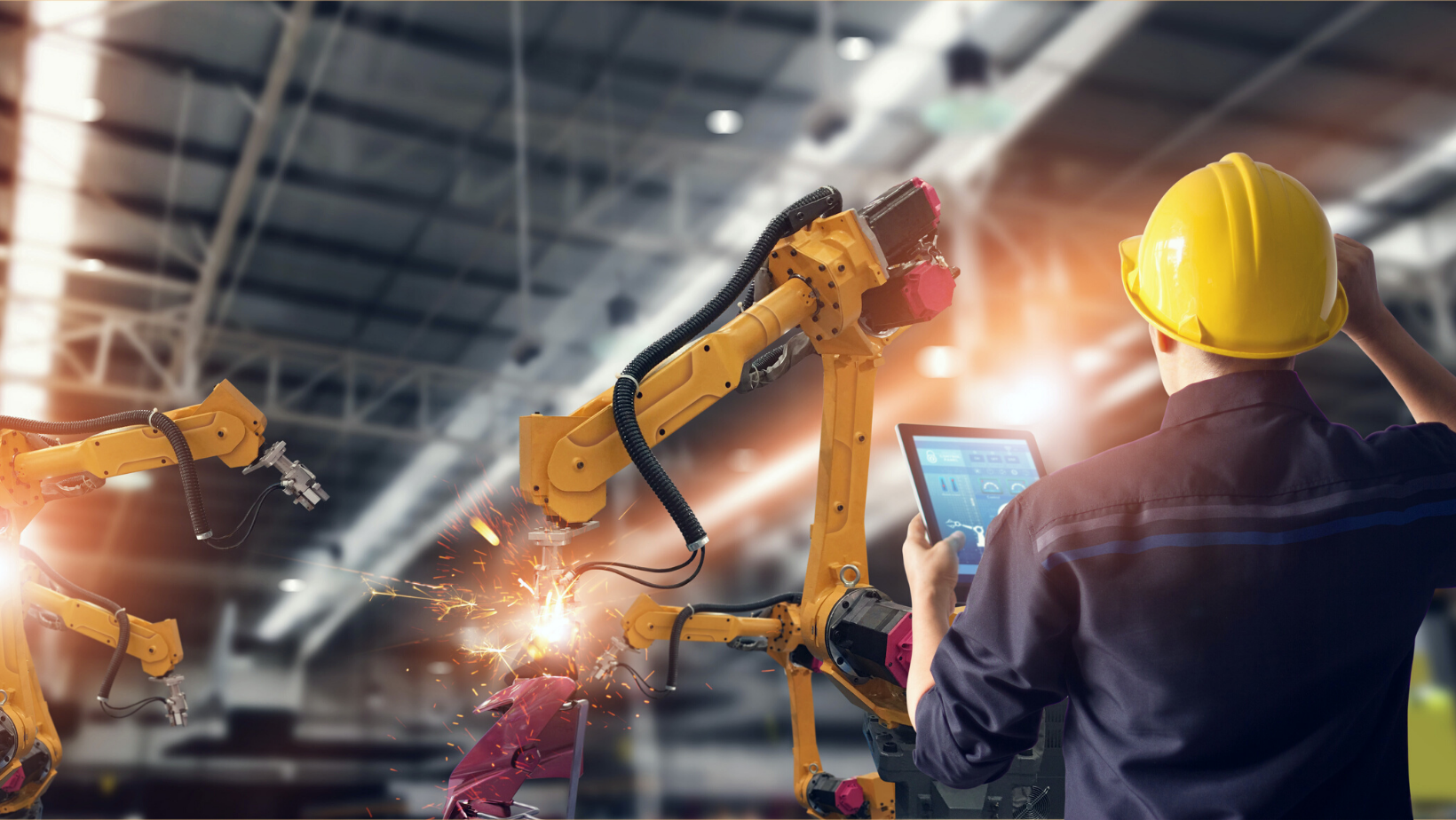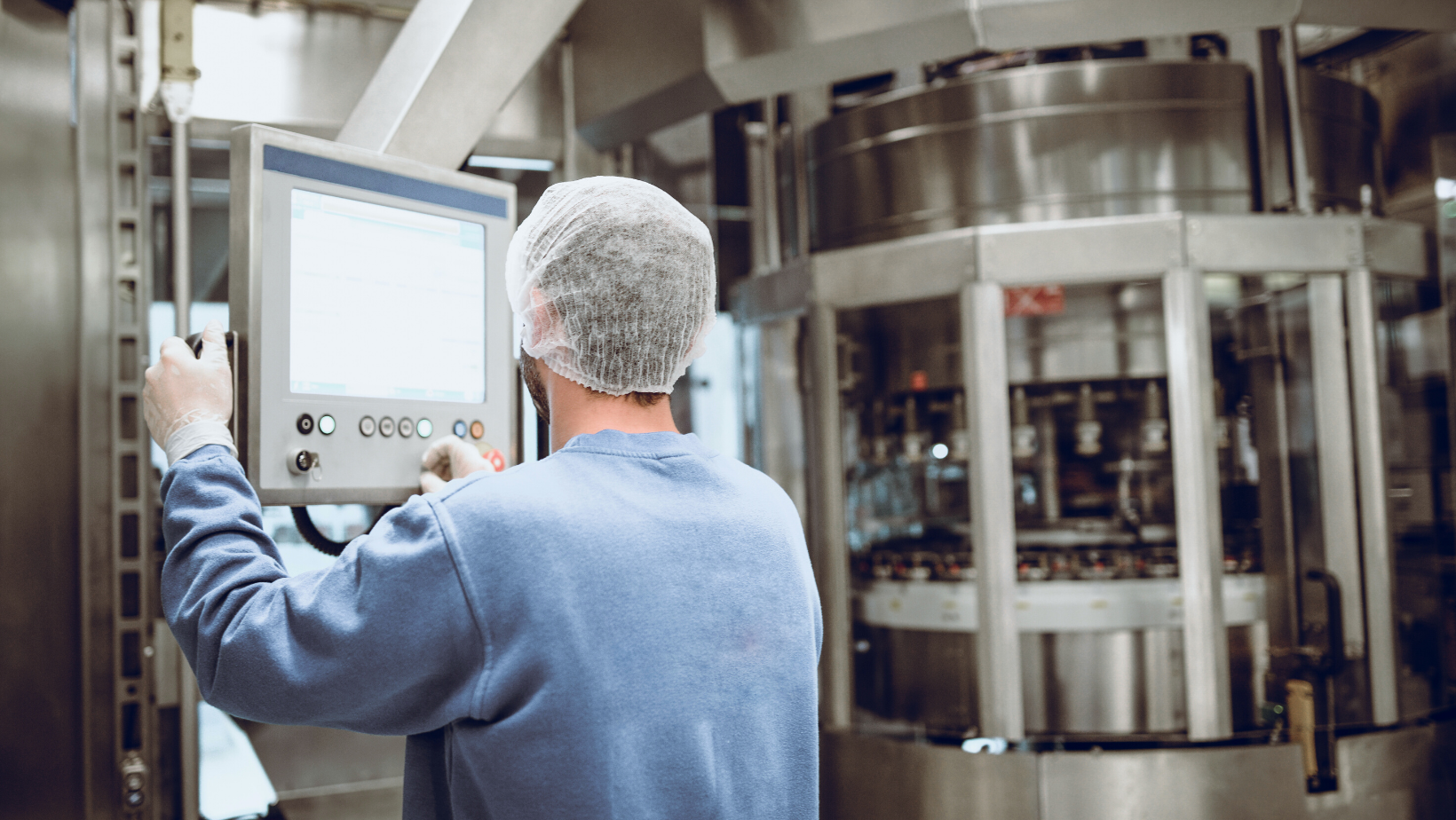How can simple automation aid manufacturing operators?
Even the most simplistic task can be aided through automation. In manufacturing, operators often have to complete repetitive and time-consuming...
4 min read
Nevatio Team
Jan 27, 2022 7:44:34 AM

As technology rapidly advances, so does the way we interact with it. Human-machine interfaces (HMIs) are becoming more and more commonplace as we move towards a future dominated by the internet of things (IoT). HMIs can be seen everywhere from smartphones to cars and even refrigerators.
Let's explore the future of HMIs and the IoT and how the evolution of these is changing the way we live our lives.
The human-machine interface has evolved throughout time to become more accessible and easier for humans to interact with machines. HMIs are becoming increasingly popular, as it is predicted that up to 80% of our interactions with computers will be non-visual by 2020.
Currently, HMIs are improving rapidly with advancements in technology, allowing users to respond through touch or sight. Speech-based HMI is on the rise as well because it allows users to interact with computers using only their voice, which is especially helpful for people who have difficulties typing on keyboards and mice.
This shift in focus towards HMIs is due largely in part because of the growing popularity of speech recognition technology, which allows people who are unable to operate a graphical user interface (GUI) due to disabilities or technological limitations the opportunity to communicate with machines through auditory input rather than visual, thus allowing greater access for people around the world.
This trend towards HMIs will continue to increase as technology evolves and becomes more widely adopted.
The need for HMI knowledge will become even more important in the coming years when industry 4.0 and advanced technologies such as artificial intelligence and machine learning become the norm with widespread adoption in both factories and homes.
Just like today's factories that rely on HMIs to create smart devices with complex machinery, we will see a rise in companies producing products that include IoT-connected components which can be monitored and controlled remotely using an HMI interface - something which is already happening today.
This presents new opportunities for professionals who are skilled at working with these types of systems, but it also presents new challenges for IT departments who will have to develop their skill set further to ensure systems are properly integrated into existing infrastructure.
Managers in the factory may utilize HMIs to monitor, manage, and control industrial automated machines, equipment and production lines. By providing real-time visibility into machine performance, HMIs also help reduce unplanned machine downtime—alerting operators to potential failures or performance drops before they disrupt production. On the other side, HMIs are crucial to system operability by allowing remote control of field-deployed devices that would be difficult to access physically, such as in large-scale IoT applications.
Industry 4.0 means more data and a bigger need for processing. Data analyzers, engineers, architects, programmers – they will all have their place in the world of HMI going forward as companies seek to take advantage of more advanced technologies that require skilled workers to implement them correctly.
By 2020 it is predicted that there will be an increased demand for people who specialize in the programming of smart, scalable HMIs which are capable of storing data that can be analyzed at a later date - as opposed to only being able to output information based on input variables. This means that although people will still need to know how to program PLCs etc., they will also need knowledge about high-speed networks, storage solutions, and cloud computing so that their systems can process huge amounts of data quickly and efficiently.
Integrating HMI with the Internet of Things is also bringing about major changes in both industries and how they are run. Currently, companies are using IoT to collect large amounts of data from sensor networks for analysis, but this requires a massive installation of additional hardware which can be expensive and not always necessary.
The implementation of HMIs allows firms to find the optimal balance between keeping costs down while still being able to access useful information on their assets - whether that's through audio signals or some other means. This type of information could include asset location, operating status, where it is located, fuel level, etc., providing valuable insight into operational performance compared to settings that may have been set up differently by another user.
An example would be if two plants of the same size had different throughput due to having different settings. By using HMIs, these differences could be identified and targeted for improvement by adjusting the parameters of each plant until they are both achieving similar outputs.
There will always be a need for people who know how to manage complex factory equipment, opening up more job opportunities in the developing Industry 4.0 world. As technology advances and companies seek to boost performance while minimizing costs, knowing how to properly use HMIs will be an increasingly important skill.
The future of HMIs unfolds in four key directions:
Newer HMI panels are being equipped with an intuitive touchscreen interface that allows operators to easily select and execute operations.
As well as avoiding the confusion caused by having multiple physical buttons, the touchscreens also serve a safety function: there is no longer any need to mount buttons in high-risk or high-hazard environments such as near flammable liquids or in areas where personnel may be at risk of injury.
The interfaces are also customizable, allowing the operator to move buttons around if they want to make certain functions easier to reach.
As well as being an important safety tool for operators, HMIs are crucial in helping companies keep track of their machines' vital signs.
They can provide constant feedback on parameters such as machine speed, temperature, vibration, and lubricant pressure – allowing people to identify problems before they become a danger.
The implementation of Industrial Internet of Things (IIoT) systems is revolutionizing and automating manufacturing environments by connecting machines, tools, and other digital components together in a single network. IIoT applications are designed to make all parts of the production process more automated.
As connectivity becomes increasingly indispensable in industrial automation, mobile HMIs are gaining popularity. They allow workers who need access to information about their machines while out on the shop floor to connect with data systems without needing to return to the control room or office to do so. Furthermore, mobile devices are being used as an interface for IIoT systems, allowing machine parameters to be monitored and controlled wherever the device is located.
Modern HMIs allow manufacturing plants of all sizes to achieve greater efficiency through faster performance, improved connectivity, and more intuitive user interfaces that promote operator safety. The future of HMI is bright, with all aspects of plant control being revolutionized by connectivity, mobile technology, and automation.
Nevatio Engineering is an agile design and engineering consulting team capable of on-demand mechanical and electrical engineering, functional prototyping, engineering documentation, and machine retrofits. We are experts in machine design, special devices, industrial products, jigs and fixtures, plus automation and controls. Our added knowledge in industry design standards such as ASME, ANSI, ISO, NFPA, NEC and BS allows us to quickly integrate our services with your existing standard design processes, keeping your resources free from unnecessary rework.
We specialize in helping industry leaders solve difficult engineering and design problems. Our mission is to empower our clients with the tools and skills necessary to create solutions to their technical problems. With our expertise, clients can address any technical design problems that stand in their way.
We believe in being consistent with our deliveries. This means that we are always on time and able to work for your business needs, no matter what they may be.

Even the most simplistic task can be aided through automation. In manufacturing, operators often have to complete repetitive and time-consuming...

Having industrial automation is a necessity, but there's a lot of gray area when it comes to calculating the benefits. And part of that gray area is...

As industries move towards the fourth industrial revolution, more and more emphasis is being put on machine-to-machine (M2M) integration. This refers...